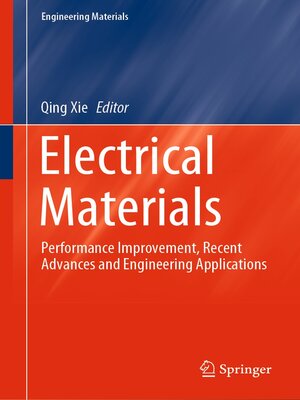Electrical Materials
ebook ∣ Performance Improvement, Recent Advances and Engineering Applications · Engineering Materials
By Qing Xie

Sign up to save your library
With an OverDrive account, you can save your favorite libraries for at-a-glance information about availability. Find out more about OverDrive accounts.
Find this title in Libby, the library reading app by OverDrive.



Search for a digital library with this title
Title found at these libraries:
| Library Name | Distance |
|---|---|
| Loading... |
This book highlights the latest advances in advanced insulating materials. Energy crisis and environmental pollution are two major themes currently faced by the human society. It is of unprecedented strategic importance to construct a strong smart grid with super/ultra-high voltage network as the backbone and clean energy transmission as the leading force. However, the performance of electrical equipment and devices is greatly determined by the properties of their insulating materials, especially when they have to work in extreme circumstances including high-temperature differences, intense radiation, and strong electric fields. The key advantage of polymers is that their properties could be adjusted by changing their chemical composition and molecular structure. Research on polymer insulating materials has been highly successful as progress has been made in characterizing these properties, designing molecular structures, and studying polymers' specialized properties. On the other hand, nanodielectrics are prepared by adding certain nanoscale fillers into a polymer matrix to yield better electrical, thermal, and mechanical properties. When the particle pretreatment methods and the content or category of fillers are adjusted, nanodielectrics tend to have greater breakdown strength as well as better high-temperature resistance and space charge suppression. Therefore, this book covers investigations of properties of insulating materials that explore their interface effects and composite structures and introduces findings in methods that improve the performance of electrical devices. The book is not only used as a timely reference for engineering and technical personnel in related fields but also as a comprehensive textbook for college students.







